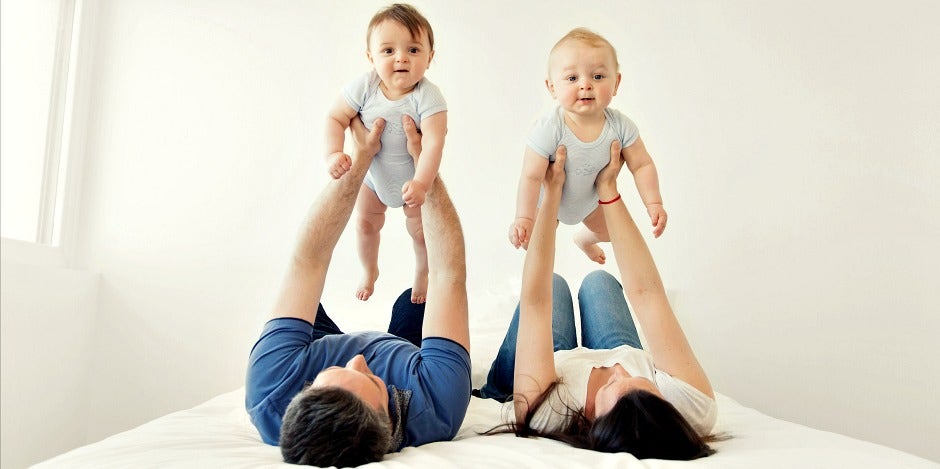4 Important Facts You Need To Know If You're Pregnant With Twins
Twins are a handful but you'll love them, nonetheless!
 getty
getty If you’ve ever known a set of twins, then you’re probably fascinated by some of the things they do. It’s also likely that you ask lots of questions when trying to figure out what life is like in their shoes or how to live with them.
But how much do you really know about them — and things should you know if you're pregnant with twins?
1. Twins interact with each other in the womb.
From as early as the beginning of the second trimester, twins begin playing with each other. At 14 weeks, twins can be seen reaching for each other, touching hands, and even kicking. By 18 weeks, they actually touch each other more than they touch themselves.
The research even indicates that twins make distinct gestures towards one another and are gentle with vulnerable areas — such as the eyes.
2. Twins develop their own language.
"Twins are regularly reported to invent languages of their own, unintelligible to others," the NCBI explains. "These languages are known as autonomous languages, cryptophasia or idioglossia. Despite current belief, this is not a rare phenomenon. Autonomous languages exist in about 40 percent of all twins, but often disappear soon."
How cool is that? If you had to go back and reread that, consider yourself in good company. During the toddler stage, twins actually develop a language of their own and use it to communicate with one another.
And while it disappears by childhood, they maintain some of the same "telepathic" attributes for much of their lives.
3. Twins share many of the same health conditions.
It’s pretty well known that twins commonly share similar personalities and emotional attributes, but did you know they also occasionally share physical health conditions?
John and Tom Pantlind are good examples of this. Not only did they share a womb, room, and childhood, but they also share heart problems.
While neither felt any symptoms for the first three-plus decades of their lives, the 36-year-old brothers recently discovered that they had atrial fibrillation issues within weeks of one another. They also have the same eyesight and, in 2009, got shingles about one month apart.
When you consider that twins have virtually the same DNA, this shouldn’t come as a huge surprise. However, it is pretty neat to think about.
4. Twins can have different fathers.
Believe it or not, it’s possible for twins to have different fathers. Yes, really.
In 2009, Mia Washington gave birth to twins who had two different dads. While this is one of the only known occurrences of this, it shows that it is possible. It involves the mother having intercourse with two different men in the span of five days and having each man’s sperm fertilize one of the eggs.
If you’re thinking about having kids in the future, you may be curious about your chances of conceiving twins.
While it’s technically possible for anyone to have twins, they’re more likely in certain situations.
As you may be aware, fertility treatments greatly increase your chances of having multiples. But even without these treatments, there are some things that make twins more likely.
Age is one factor. Women over the age of 30 are much more likely to conceive twins (as a result of increasing FSH hormone levels). If you have a family history of fraternal twins, your chances of conceiving multiples rises. Height and weight also come into play — taller, larger women giving birth to twins more frequently than shorter, thinner women.
Paula Mooney is the author of several books (most written under pseudonyms to protect the guilty). Her essays and articles have been featured in national print magazines such as Writer's Digest, and in major online publications like Yahoo, Examiner, and more.
YourTango may earn an affiliate commission if you buy something through links featured in this article.

